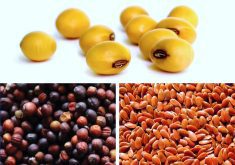ICE Futures Canada canola contracts found themselves moving lower for most of the week ended July 22, and could be set for some further declines before harvest if no new weather scares or outside market rallies materialize.
A heat wave in southern Manitoba and Saskatchewan did provide a little support for canola, with reports of blossoms dropping in some cases as the mercury climbed. However, traders were generally downplaying any concerns from the heat, and spent more time focusing on the halfway-decent prospects in Alberta and central Saskatchewan. Those crops are far from being made, but are generally thought to be in good shape for the time being. In addition, the heat helped late-seeded fields see some rapid development, lessening the concerns over potential frost damage in the fall.
Read Also

Brazil muscles into wheat market
Glacier FarmMedia – Canadian wheat exporters are facing a new competitor in their second biggest market. “The rapid emergence of…
Meanwhile, the Canadian dollar climbed above US$1.05 during the week, hitting US$1.06 at one point. The strong currency makes canola more expensive for export customers, tempering some demand. The strong Canadian dollar also cuts into crush margins, causing domestic processors to back away from the market. However, the crush pace is still running just as strong as ever, and with all of the new capacity online that buying interest should never be far away.
Western barley futures were untraded and unchanged once again. In the U.S., the focus remains squarely on the weather and the shifting day-to-day forecasts. Soybeans, corn, and wheat were all mixed during the week, with losses in the front months, but gains in the more deferred positions.
Heat makes wheat?
It’s often said that “rain makes grain,” but I’ve never heard anyone utter the equally poetic turn of phrase “heat makes wheat.” The heat was front and centre in the U.S. grain markets during the week, with daily highs putting the record levels hit in the Canadian Prairies during the week to shame. Sunshine and heat are a good thing for crop development, but just like rain, they’re better in moderation.
The U.S. corn crop is going through its pollination stage, a key time of year when it comes to determining yields down the road as hot weather now can lead to smaller cobs. The extremely tight U.S. corn supply means that every little concern over possible yield reductions going through the summer will be enough to support prices, while a hint of rain and more moderate temperatures will take those weather premiums right back out.
For soybeans, the weather in August when the pods are filling will be more important than the current conditions. Demand for the commodity remains strong and supplies are tightening, but the market could show some reluctance to see too large of a move until some of the longer-range forecasts get closer to reality.
Looking at wheat, the spring wheat futures in Minneapolis posted some good gains during the week given the persistent concerns over unseeded acres and yield reductions for the U.S. crop. However, the gains in Chicago were more subdued, with much of the attention there turning away from weather and towards the fact that Russia will be a much larger competitor in the global export market this year.
Forthree-times-dailymarketreportsfromResourceNews International,visit“ICEFuturesCanadaupdates” at www.albertafarmexpress.ca.
After a drought kept the country from exporting wheat last year, Russia’s agriculture minister came out predicting grain exports this crop year of 18 million tonnes from the country. With Ukraine also back as a wheat exporter, the U.S. position as the wheat exporter of choice this past year is becoming less and less of a factor.
While U.S. wheat may be getting overpriced for some of the international markets, the domestic demand could be picking up. Corn and wheat are currently in the unusual situation where corn prices are nearly as high as wheat. With that being the case, some U.S. livestock feeders are said to be putting more wheat in their rations when the price is right.
Looking beyond the supply-demand fundamentals, macroeconomic issues, such as the debt situation in Europe and the possibility of the U.S. defaulting on its huge debt could also come to play in the North American grain and oilseed markets over the next few weeks.
The agriculture markets are seen as “riskier” investments and global economic uncertainty could cause some of the larger speculators to adjust their positions accordingly.
PhilFranz-WarkentinwritesforResource NewsInternational(RNI),aWinnipegcompany specializingingrainandcommodity marketreporting.















